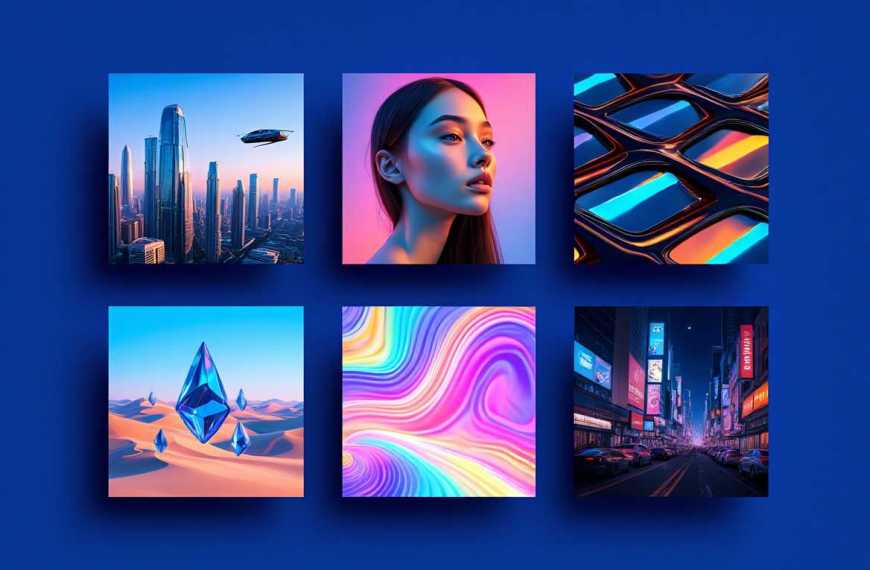Have you ever ended a video call feeling more drained than connected? You’re not alone. Studies indicate that 65% of remote workers feel disconnected from their teams, even after endless Zoom calls. The problem isn’t you—it’s the tools. Traditional video calls flatten nuance, stifle spontaneity, and leave collaboration feeling transactional.
Enter Google Beam, a groundbreaking platform blending augmented reality (AR), real-time document sharing, and spatial audio to make remote work feel human again. Imagine brainstorming with a colleague who can “draw” 3D models mid-air while you tweak a shared spreadsheet—all without leaving your couch.
By the end of this article, you’ll learn:
- Why Google Beam could end “collaboration fatigue” (and why it matters for your team’s creativity)
- 3 mistakes teams make with remote tools (and how Beam solves them)
- Actionable steps to integrate Beam into your workflow today
Let’s dive into the future of work—where distance disappears, and ideas take center stage.
The Evolution of Video Communication
Since the early days of video calls, we’ve sought to replicate the nuances of in-person interactions. However, flat screens and lagging audio often fall short. Recognizing this, Google introduced Project Starline in 2021—a research initiative aiming to make virtual conversations feel as natural as face-to-face meetings.
Fast forward to 2025, and Project Starline has evolved into Google Beam, unveiled at Google I/O 2025. This platform leverages advanced AI and 3D imaging to create immersive communication experiences. Beam utilizes a light field display, multiple cameras, spatial audio, and AI-powered cloud computing to create a realistic, real-time 3D experience of the person on the other end of a virtual meeting, all without the need for headsets or glasses.
Why Google Beam Matters More Than You Think
1. Immersive 3D Experience Without Wearables
Unlike VR or AR solutions requiring headsets, Google Beam delivers a three-dimensional experience without additional gear. Using a combination of light field display technology and multiple cameras, Beam captures and renders life-size, high-fidelity images, allowing users to make eye contact and perceive depth naturally.
2. AI-Powered Real-Time Translation
Language barriers are a significant hurdle in global communication. Beam addresses this with real-time translation capabilities, enabling participants to converse in their native languages while maintaining voice tone and expressions.
3. Enhanced Engagement and Reduced Fatigue
Traditional video calls often lead to “Zoom fatigue.” Beam’s immersive experience has been shown to increase engagement and memory retention while reducing fatigue, making virtual meetings more effective and less draining.

Source: Google
How Google Beam Works
Advanced Hardware Integration
- Light Field Display: Creates a sense of depth and presence.
- Multiple Cameras: Capture 3D data from various angles.
- Spatial Audio: Delivers realistic sound positioning.
- AI Volumetric Video Model: Processes and renders 3D images in real-time.
This hardware, developed in partnership with HP, is designed to be compact and integrates seamlessly with existing video conferencing tools like Google Meet and Zoom.
Software and AI Capabilities
- Transform 2D video streams into 3D representations.
- Enable real-time language translation.
- Ensure low-latency, high-quality video and audio transmission.
Learn more about Google’s immersive communication projects on the official Google blog.
Real-World Applications and Benefits
Enterprise Collaboration
Companies like Salesforce, Deloitte, and Duolingo are early adopters of Google Beam, utilizing it to enhance remote collaboration and client interactions.
Healthcare Consultations
Medical professionals can use Beam for remote consultations, providing patients with a more personal and engaging experience.
Education and Training
Beam offers educators a platform to conduct immersive virtual classes, improving student engagement and comprehension.
Global Business Meetings
With real-time translation and lifelike presence, international business meetings become more effective, fostering better understanding and relationships.
3 Mistakes Teams Make with Remote Tools (and How Beam Solves Them)
Mistake #1: Treating Collaboration as Transactional
Hybrid work thrives on spontaneity—think hallway chats or whiteboard scribbles. Yet, most tools prioritize efficiency over creativity. Google Beam’s Virtual Office Mode lets teams roam a digital workspace, “bump into” avatars, and spark impromptu brainstorming sessions around floating whiteboards.
Case Study: Tech startup Flowly slashed meeting time by 40% using Beam’s unified workspace, replacing disjointed apps with seamless AR collaboration.
Mistake #2: Ignoring Non-Verbal Communication
93% of communication is non-verbal, yet traditional video calls strip away eye contact and gestures. Beam’s avatars track:
- Eye movement (via AR sensors)
- Hand gestures (for emphasis)
- Proximity (avatars step closer during debates)
Mistake #3: Underestimating Language Barriers
Global teams often struggle with miscommunication. Beam’s AI-powered speech translation solves this by converting conversations in real-time while preserving the speaker’s tone and expressions. Early adopters like Duolingo use this to host multilingual meetings without interpreters.
Getting Started with Google Beam
Google Beam is currently available to select enterprise partners, with broader availability expected later in 2025.
To prepare for integration:
- Assess Compatibility: Ensure your infrastructure can support Beam’s hardware and software requirements.
- Train Staff: Educate your team on using Beam effectively to maximize its benefits.
- Pilot Programs: Start with small-scale implementations to evaluate its impact before full-scale deployment.
Conclusion: Collaboration Should Feel Alive, Not Artificial
Google Beam isn’t just another app—it’s a lifeline for teams drowning in pixelated small talk. By restoring humanity to remote work, Beam turns sterile meetings into dynamic, creative exchanges.
Key Takeaways:
- Ditch fragmented apps; unify with Beam’s immersive workspace.
- Prioritize non-verbal cues to rebuild trust.
- Embrace AI translation to bridge global teams.
Ready to transform your team’s connection? Start with a free Beam trial today—and watch your next brainstorm ignite with energy you thought was lost to remote work.
What if your best ideas are waiting in a virtual hallway?
Let’s discuss: How would your team’s culture shift with tools like Beam? Share your thoughts below!
🔗 Recommended Post
Top 10 Free AI Image Generation Tools →
Free AI image generator tools have revolutionized the way we create visuals—eliminating the need for expensive software or professional design skills.













